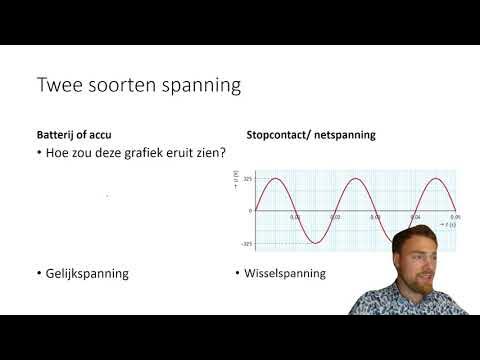Making a Super IONIC PLASMA THRUSTER For Flight ! (NEW Design)
Summary
TLDRIn this video, the creator explores the cylindrical model of an ion thruster for spacecraft propulsion, starting with a 400 kV high voltage generator. To enhance power and reduce weight, copper tape replaces wire, and a lightweight plastic cone replaces the metal cylinder. The non-conductive plastic is coated with graphite from batteries and then electroplated with copper for conductivity. A side-by-side test with a smaller model impresses, leading to a flight model with four thrusters, powered by a 3.7V battery. A helium balloon simulates space's weightlessness, showcasing the thruster's potential.
Takeaways
- 🚀 The script discusses the development of an ion thruster for spacecraft propulsion.
- ⚡️ A 400 kV high voltage generator was used to test the cylindrical model of the ion thruster.
- 🔧 The cylindrical model was found to be more powerful than the linear model.
- 🏋️♂️ Efforts were made to make the thruster lighter by using copper tape and a plastic cone-shaped model.
- 🔌 Plastic's non-conductive nature was addressed by coating it with graphite from 1.5V batteries.
- ⚗️ An electrolysis process was used to add a copper coating to the graphite for better conductivity.
- 🔬 The script describes a side-by-side test of the improved ion thruster with a smaller size model.
- 📊 The results of the tests were positive, leading to the development of a flight model.
- 🔋 A 3.7 volt battery and a key were used to power the flight model with four thrusters.
- 🎈 A helium balloon was used to simulate the weightlessness of space for testing the ion thruster on Earth.
Q & A
What is an ion thruster and how does it work?
-An ion thruster is a type of spacecraft propulsion system that generates thrust by accelerating ions using electric fields. It operates by emitting a beam of ions, which creates a force opposite to the direction of the ions, propelling the spacecraft forward.
Why did the researcher choose a cylindrical model over a linear model for the ion thruster?
-The researcher chose a cylindrical model because it has a lot of power compared to the linear model. This choice was made after extensive research, indicating that the cylindrical design might offer better performance in terms of thrust generation.
What voltage was used to start the ion thruster in the experiment?
-A 400 kV high voltage generator was used to start the ion thruster, which is significantly higher than the usual voltages and suggests a very powerful setup.
Why did the researcher decide to make the ion thruster lighter?
-The researcher aimed to make the ion thruster lighter to improve its efficiency and performance, as weight is a critical factor in spacecraft propulsion systems.
What material was used to replace the heavy metal cylinder, and why?
-A plastic model with a cone shape was used to replace the heavy metal cylinder. This was done to reduce the overall weight of the ion thruster, which is essential for space applications where every gram counts.
How did the researcher address the issue of plastic not conducting electricity?
-The researcher coated the plastic with graphite from 1.5V batteries to make it conductive. This was a creative solution to the problem of plastic's natural non-conductive properties.
What method was used to add a copper coating to the graphite?
-The researcher used electrolysis to add a copper coating to the graphite. This was done by connecting a 9 volt battery, with the positive base to a piece of copper and the negative base to the graphite, while copper sulfate was added to water.
What was the purpose of making the plastic conductive?
-Making the plastic conductive was necessary to ensure that the electric fields could be effectively used to accelerate ions, which is a fundamental part of the ion thruster's operation.
How did the researcher test the efficiency of the improved ion thruster?
-The researcher tested the efficiency of the improved ion thruster by comparing its performance side by side with a smaller size model. This allowed for a direct comparison of the thrust and efficiency of the different designs.
What was the final step in the researcher's experiment to simulate space conditions?
-The final step was to test the ion thruster flight model, which included 4 thrusters powered by a 3.7 volt battery and a key. A helium balloon was used to simulate the weightlessness of space on Earth.
What was the outcome of the experiment, and what was the researcher's next step?
-The results of the experiment were amazing, indicating that the modifications made to the ion thruster were successful. The researcher's next step was to test the ion thruster in a flight model setup.
Outlines

This section is available to paid users only. Please upgrade to access this part.
Upgrade NowMindmap

This section is available to paid users only. Please upgrade to access this part.
Upgrade NowKeywords

This section is available to paid users only. Please upgrade to access this part.
Upgrade NowHighlights

This section is available to paid users only. Please upgrade to access this part.
Upgrade NowTranscripts

This section is available to paid users only. Please upgrade to access this part.
Upgrade NowBrowse More Related Video

Milestone 6 presentation

Generation of High A.C. Voltages Cascaded Transformer - High Voltage Engineering

Practical Marine Electrical Knowledge: Program 8. Electric Propulsion & High Voltage Practice

H1.1 Elektriciteit Opwekken 3HAVO

DON'T BUY this HV Generator! Build this one instead....please

NASA Decides Boeing's Starliner Is Too Risky For Return | SpaceX Crew Dragon Takes Over
5.0 / 5 (0 votes)